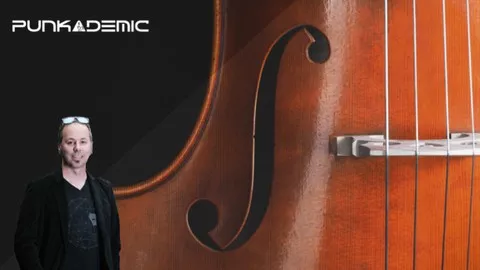PUNKADEMIC Orchestration Masterclass Part 1 The Strings & The Winds TUTORIAL
Every aspect of composing for the orchestra whether you are working with real players or sampled orchestra libraries
What you’ll learn:
- Compose music for the strings and for the winds
- The unique properties of every instrument in the orchestra
- How writing for the orchestra works, including scores, parts, shared parts, and more.
- Making your synthesized orchestrations sounds great!
Requirements
Understanding how to read music, or the basic principals of notated music will be helpful but is not required.
Description
100% Answer Rate! Every single question posted to this class is answered within 24 hours by the instructor.
Are you a music maker, performer, composer, or aspiring songwriter looking to up your game? This is the place to start.
It’s time to learn orchestration to give your music the power, the passion, and the prodigiousness that it deserves.
Orchestration is the study of each instrument in the orchestra, how they work, how to write for them, and how each instrument collides with the others to make new sounds. Think of it like painting: The orchestra is your palette of colors. But you don’t want to just mix them all together. You need to understand some principles of mixing those colors together before you put your brush on canvas.
In this series of classes we are going to work on three things:
Instrumentation: Knowing how all of the instruments in the orchestra work, and how to write for them in an idiomatic way.
Composition: Using the orchestra to write powerful music. Learning how to blend the different sounds of the orchestra to make a new, unique, sound.
Synthestration: Using common production software (Ableton Live, FL Studio, Logic Pro, Pro Tools, Cubase, etc.) to create a realistic orchestra sound using sample libraries.
In this first class, “Part 1: The Strings and The Winds” we are going to focus entirely on instrumentation – learning how to write for the strings (violin, viola, cello, bass/contrabass) and the winds (flute, oboe, clarinet, bassoon, and saxophone).
If you don’t know me, I’ve published a lot of classes here. Those classes have been really successful (top sellers, in fact!), and this has been one of the most requested class that my students (over 1,000,000 of them) have asked for. I’m really excited to finally be able to bring this to you.
Here is a list of some of the topics we will cover:
- Transposition
- Score Order
- Tips for Reading Scores
- Preparing Parts for Players
- Page Turns and Cues
- Bowing
- Pizzicato
- Double Stops
- The Violin
- The Viola
- The Cello
- The Bass
- String Effects
- Harmonics
- Col Legno
- Ponticello
- Glissando
- Vibrato
- Scordatura
- The Winds
- Sustained Tones and Breathing
- Tonguing and Rhythm
- Types of Flutes
- Types of Oboes
- Types of Clarinets
- The Break in the Clarinet
- Types of Bassoons
- Types of Saxophones
- Alto Saxophone, Tenor Saxophone, Bari Saxophone, and Soprano Saxophone
- Woodwind Effects
- Multiphonics
- And Much, Much, More!

